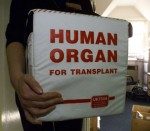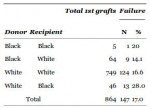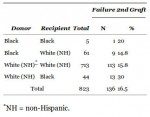1897: The Jewish population had grown to 225,637 of a total of 1,936,392[1]
History of the Jews in Bessarabia, Wikipedia.
The rationale of organ trafficking is usually explained in purely economic terms: rich exploiting poor. The reality is that biological/genetic compatibility also factors into the equation.
Shanda fur die goyim is misunderstood as embarassment. It is a reflection of jewish sensitivity to collective exposure/responsibility/vulnerability. It is an alarm, a call for the making of excuses and transferring of blame elsewhere. The most extreme and common example is how jews transfer blame to “anti-semitism”.
Report: Israeli suspected of running Ukraine organ trafficking ring, Haaretz Daily Newspaper, Aug 2010. A commenter’s telling reaction to this increasingly obvious pattern of organ-related jewish crime:
Israelis are going to have to do something about this
These stories are more damaging for Israel than a thousand Grad rockets
Less than a month after the “Bid Rig” arrest of trafficker Levy Izhak Rosenbaum in Brooklyn, an article by Donald Boström published by Aftonbladet on 17 Aug 2009 generated quite a bit of attention and controversy. The original, Donald Boström om hur palestinier anklagar Israels armé för att stjäla kroppsdelar från sina offer, is in Swedish. TLAXCALA : “Our sons plundered for their organs” is a translation to English:
Israel has repeatedly been under fire for its unethical ways of dealing with organs and transplants. France was among the countries that ceased organ collaboration with Israel in the nineties. Jerusalem Post wrote that “the rest of the European countries are expected to follow France’s example shortly.”
Half of the kidneys transplanted to Israelis since the beginning of the 2000s have been bought illegally from Turkey, Eastern Europe or Latin America. Israeli health authorities have full knowledge of this business but do nothing to stop it. At a conference in 2003 it was shown that Israel is the only western country with a medical profession that doesn’t condemn the illegal organ trade. The country takes no legal measures against doctors participating in the illegal business – on the contrary, chief medical officers of Israel’s big hospitals are involved in most of the illegal transplants
Doctor admits Israeli pathologists harvested organs without consent, The Guardian, 20 December 2009:
The story emerged in an interview with Dr Yehuda Hiss, former head of the Abu Kabir forensic institute near Tel Aviv. The interview was conducted in 2000 by an American academic who released it because of the row between Israel and Sweden over a report in the Stockholm newspaper Aftonbladet.
Channel 2 TV reported that in the 1990s, specialists at Abu Kabir harvested skin, corneas, heart valves and bones from the bodies of Israeli soldiers, Israeli citizens, Palestinians and foreign workers, often without permission from relatives.
Harvesting organs without consent is a euphemism for organ theft.
The interview with Hiss was released by Nancy Scheper-Hughes
Israel demanded that Sweden condemn the Aftonbladet article, calling it an antisemitic “blood libel”. Stockholm refused, saying that to so would violate freedom of speech in the country.
Swedish Anti-Semites Dig Up a Blood Libel, Commentary Magazine, Jonathan S. Tobin, 20 Aug 2009:
This is nothing but a modern version of medieval Jewish blood-libel myths. Whereas in the past, the object of these hate-inspired canards were helpless Diaspora Jewish communities, now it’s the state of Israel. Though Bostrom disingenuously claimed that he was not promoting the tale but merely repeating what others had told him, the ultimate purpose of such libels is to delegitimize the Jewish people and to exculpate the violence committed against them.
A new, old and ugly spirit, Haaretz, Jonathan Spyer, 4 Sep 2009:
The article in the popular Swedish newspaper Aftonbladet alleging the Israel Defense Forces were involved in organ theft was the latest and most heinous example of an increasingly familiar phenomenon: classic anti-Semitic tropes and expressions of open hostility to Jews turning up in statements by members of the European liberal left.
These tones are both new and very old. They are not the language of humanism and the enlightenment. They are instantly recognizable to anyone familiar with the tone of anti-Israel literature in the Middle East. They are also redolent of another, older Europe. These stalwarts of the bon ton left are adopting ideas whose original purveyors were situated, and are still situated, on the extreme right of the political spectrum. The ideas in question, which hark back to medieval Christianity, migrated from the European radical right to the Middle East, from where they have now migrated back to Europe, finding a new political home in the process.
Israeli Organ Trafficking and Theft: From Moldova to Palestine, by Alison Weir, Nov 2009:
In August Sweden’s largest daily newspaper published an article containing grisly evidence suggesting that Israel had been taking Palestinian internal organs. The article, by veteran photojournalist Donald Bostrom, called for an international investigation to discover the facts.
Israel immediately accused Bostrom and the newspaper of “anti-Semitism,” and charged that suggesting Israelis could be involved in the illicit removal of body parts constituted a modern “blood libel” (medieval stories of Jews killing people for their blood).2
Numerous Israeli partisans repeated these accusations, including Commentary’s Jonathan Tobin, who asserted that the story was “merely the tip of the iceberg in terms of European funded and promoted anti-Israel hate.”3 Others suggested that the newspaper was “irresponsible” for running such an article.4
The fact is, however, that Israeli organ harvesting – sometimes with Israeli governmental funding and the participation of high Israeli officials, prominent Israeli physicians, and Israeli ministries – has been documented for many years.
While Scheper-Hughes emphasizes that traffickers and procurers come from numerous nations and ethnicities, including Americans and Arabs, she is unflinchingly honest in speaking about the Israeli connection:
“Israel is at the top,” she states. “It has tentacles reaching out worldwide.”6
In a lecture last year sponsored by New York’s PBS 13 Forum, Scheper-Hughes explained that Israeli organ traffickers, “had and still have a pyramid system at work that’s awesome…they have brokers everywhere, bank accounts everywhere; they’ve got recruiters, they’ve got translators, they’ve got travel agents who set up the visas.”7
In her Forum 13 lecture Scheper-Hughes discussed the two motivations of Israeli traffickers. One was greed, she said. The other was somewhat chilling: “Revenge, restitution – reparation for the Holocaust.”
She described speaking with Israeli brokers who told her “it’s kind of ‘an eye for an eye and a tooth for a tooth. We’re going to get every single kidney and liver and heart that we can. The world owes it to us.’”
Scheper-Hughes says that she “even heard doctors saying that.”
For many years Israelis in need of an internal organ have gone on what experts call “transplant tourism” – traveling to other nations to obtain internal organs. Sometimes body parts are obtained from those freshly dead; more often from the desperately needy. While affluent people from numerous countries and ethnicities engage in this practice, Israel is unique in several significant ways.
First, Israelis engage in this at an extraordinarily high rate. According to a 2001 BBC report, Israelis buy more kidneys per capita than any other population.
Second, Israelis have the lowest donor rate in the world – one-fifth that of Europe, according to BBC. This is in part because there has been a widespread impression that Jewish religious law prohibits transplants as a “desecration of the body.”11 The Israeli news service Ynet reports, “the percentage of organs donated among Jews is the lowest of all the ethnic groups.”12
Third, the Israeli government has enabled the practice. For many years the Israeli health system subsidized its citizens’ “transplant holidays,” reimbursing Israelis $80,000 for medical operations abroad. Much of the remaining costs could often be obtained from government-subsidized13 Israeli insurance plans.14 In addition, Israel’s Ministry of Defense was directly involved.
Scheper-Hughes discussed Israeli organ trafficking in detail in 2001 in published testimony to the Subcommittee on International Relations and Human Rights of the House Foreign Affairs Committee.15 In her extensive testimony, Scheper-Hughes stated that although Israel had become a pariah for its organ policies, Israeli officials exhibited “amazing tolerance…toward outlawed ‘transplant tourism.’”
She described an international syndicate which was “organized through a local business corporation in conjunction with a leading transplant surgeon, operating out of a major medical center not far from Tel Aviv,” and which had forged links with transplant surgeons in Turkey, Russia, Moldavia, Estonia, Georgia, Romania, and New York City.
The Israeli Ministry of Defense was directly involved in what Scheper-Hughes called Israel’s “‘illicit [in other nations] national ‘program’ of transplant tourism…Members of the Ministry of Defense or those closely related to them” accompanied transplant junkets.
In her Forum 13 lecture, Scheper-Hughes said that investigating Israeli organ trafficking over the past decade had taken her “from country to country to country to country.”
One of these is Moldova, the poorest country in Europe – and homeland of Israeli Foreign Minister Avigdor Lieberman – where 90 percent of the people earn less than $2 a day. A 2001 BBC report on organ trafficking described the situation: “Hundreds of Israelis have created a production line that starts in the villages of Moldova, where men today are walking around with one kidney.16
Another is Brazil, where a legislative commission found that 30 [it may actually have been as high as 60] Brazilians from impoverished neighborhoods had sold their kidneys to a trafficking ring headed by Israelis, with Israeli citizens receiving almost all of the organs, and the Israeli government providing most of the funding.17
An Inter Press Service (IPS) news story from the time reported that Scheper-Hughes testified to the commission that international trafficking of human organs had begun some 12 years earlier, promoted by Zaki Shapira, head of kidney transplant services at Bellinson Medical Center, near Tel Aviv.
Scheper-Hughes reported that Shapira had performed more than 300 kidney transplants, sometimes accompanying his patients to other countries such as Turkey. The recipients were very wealthy or had very good health insurance, and the “donors” very poor people from Eastern Europe, the Philippines and other developing countries.
The chairman of the Brazilian commission, physician Raimundo Pimentel, was outraged at Israeli policies, pointing out that trafficking can only take place on a large scale if there is a major source of financing, such as the Israeli health system. Pimentel charged that the resources provided by the Israeli health system “were a determining factor” in enabling a network that preyed on society’s poorest populations.
Organ theft
It is difficult to know how often Israeli trafficking involves outright theft of vital organs from living human beings.
It is not rare for the “donor” to receive little or none of the compensation promised. For example, in 2007 Israel’s Haaretz newspaper reported that two Israelis had confessed to persuading Palestinians “from the Galilee and central Israel who were developmentally challenged or mentally ill to agree to have a kidney removed for payment.” According to the Haaretz report, after the organ had been taken the traffickers refused to pay for them.
On occasion, people are coerced into giving up their organs. For example, Levy Izhak Rosenbaum, the alleged Brooklyn trafficker recently arrested in an FBI sweep in New Jersey, reportedly carried a gun. When a potential organ seller would try to back out, Rosenbaum would use his finger to simulate firing a gun at the person’s head.
The Rosenbaum case, reportedly part of a ring centered in Israel, is the first case of trafficking to be prosecuted in the US. His arrest and the substantial evidence against him may have surprised State Department Countermisinformation Director Todd Leventhal, who had characterized organ trafficking as an “urban legend,” stating, “It would be impossible to successfully conceal a clandestine organ-trafficking ring.” Leventhal called such reports “irresponsible and totally unsubstantiated.”
Todd “urban legend” Leventhal – the fox watching the chicken coop.
Perhaps one of the most long-term and high-level cases of organ theft – and one that involves Palestinian as well as Israeli organs – concerns an extraordinarily high official: Dr. Yehuda Hiss, Israel’s chief pathologist and, from 1988 through 2004, director of Israel’s state morgue, the L. Greenberg Institute of Forensic Medicine at Abu Kabir.
An early indication of malfeasance came to light in 1998 and concerned a Scottish man named Alisdair Sinclair, who had died under questionable circumstances after being taken into custody at Israel’s Ben-Gurion Airport.
Palestinian Victims
Israelis have also targeted Palestinians, a particularly vulnerable population on numerous levels.
In her congressional subcommittee testimony, Scheper-Hughes reported that before he moved overseas, Israeli hospital transplant head Zaki Shapira had located kidney sellers “amongst strapped Palestinian workers in Gaza and the West Bank.” She said that his “hand was slapped by an ethics board,” and he moved his practice overseas.
Israel has consistently characterized such accusations as “anti-Semitic,” and numerous other journalists have discounted them as exaggerations.
However, according to the pro-Israel Forward magazine, the truth of these charges was, in fact, confirmed by an Israeli governmental investigation a number of years ago.
A very small but significant minority of Israelis, including military officers and governmental ministers, hold extremist supremacist views relevant to organ extraction. In 1996, Jewish Week reported that Rabbi Yitzhak Ginsburgh, a leader of the Lubavitch sect of Judaism and the dean of a religious Jewish school in a West Bank settlement, stated: “If a Jew needs a liver, can you take the liver of an innocent non-Jew passing by to save him? The Torah would probably permit that.” Ginzburgh elaborated: “Jewish life has infinite value. There is something infinitely more holy and unique about Jewish life than non-Jewish life.” [The Jewish Week, April 26, 1996, pp. 12, 31]
Most of the rest of jews either agree or look the other way. The fact that there are such “extremists” in positions of authority is evidence that their views are not seen as intolerable or unacceptable by the majority of their compatriots.
Scheper-Hughes, in her congressional testimony, describes the danger of “organs got by any means possible including (I was told by one guilt-ridden practitioner) chemically inducing the signs of brain death in dying patients of no means and with access to minimal social support or family surveillance.”
More on Alison Weir at AlisonWeir.org. Jews detest her. See Alison Weir… anti-Semite, Israel-basher and one ugly bitch! and Rogues Gallery >> ALISON WEIR-NAZI SYMPATHIZER.
More information concerning Yusuf Sonmez, AKA “Dr Frankenstein”.
Turkish organ trade doctor faces 171 years in prison, B92, 29 Sep 2011:
The Istanbul court indicted Sonmez for illicit organ trafficking and forming of a criminal organization.
The organs were being sold in Israel.
Kosovo Organ Trafficking Witness Recalls Surgery Con, Balkan Insight, 13 Feb 2013:
Seven Albanian defendants are being prosecuted in Pristina, including Lutfi Dervishi, the owner of the Medicus clinic.
Two Turkish doctors, Sonmez and Kenan Demirkol, are also accused of being involved in the organ trafficking ring.
Sonmez was arrested in Istanbul in January 2011 but was later released on bail.
But Serbia’s war crimes prosecutor said on Tuesday that Sonmez had absconded to South Africa and then moved on to another, unnamed African country that does not recognise the EU rule of law mission’s jurisdiction in Kosovo and therefore will not extradite the Turkish doctor to Pristina.
War crimes prosecutor Vladimir Vukcevic told Serbian media that Sonmez had “set up a clinic for organ transplants” in the unnamed African country.
Former health official admits to illegal organ harvesting from living donors, The Raw Story, 5 Apr 2013:
The trial, which opened in 2011, is set to draw to a close by the end of the month.
The indictment describes Israeli national Moshe Harel as the mastermind of a network for recruiting donors and finding recipients, while Turkish doctor Yusuf Sonmez is said to have performed organ removal surgeries at the clinic.
But the two are not among those being tried in Pristina as they did not make themselves available to the court.
Unity of Nobility – News for White Europeans has been tracking recent developments in organ harvesting.
For example, Jews use humor to combat Blood Libel and Organ Theft, which links Fighting the New Blood Libel, Jewish Journal:
“What the song did was place the hypocrisy and the prejudice of the Swedish government — and, by the way, of the Swedish press — against Israel into clear view,” Glick said. “It was a very stinging response straight to their jugular. And it was more effective than we could have dreamed.”
A volunteer in Israel originally from Sweden provided Swedish subtitles for the clip on YouTube.
“Through Swedish Jews here in Israel who made aliyah, we managed to place it in some of the very few pro-Israel Web sites in Sweden,” Glick said. The next day, a news article about it appeared in Sweden’s leading broadsheet newspaper, Dagens Nyheter.
“They were surprised that suddenly there was this Israeli voice. They weren’t expecting us to give them a piece of our mind. No one here had ever done this sort of thing before. So when the Swedish newspaper published a news article about it, the news of Latma spread like wildfire. Within three days we had over 100,000 viewers, most of them from Sweden and the U.S., at our site in the clip on YouTube.
“What was even more interesting was that a lot of the talkbacks that these Swedes wrote on YouTube were Nazi-like in their anti-Semitism. The Israeli public got very angry at these Nazi comments. Army Radio reported the news, and one of their talk show hosts called on his listeners to go on to our site and ‘fight the Nazi assault.’ This really made the public feel empowered, and they flocked to Latma by the thousands. It was simply amazing.
“The ABBA parody showed that there is a hunger in Israel for this kind of Web site, for this kind of satire, for this kind of biting criticism of the media at home and abroad,” Glick said.
Understanding this “new blood libel” helps put the “old blood libel” in perspective.
The podcast will be broadcast and available for download on Tuesday at 9PM ET.
Podcast: Play in new window | Download

















